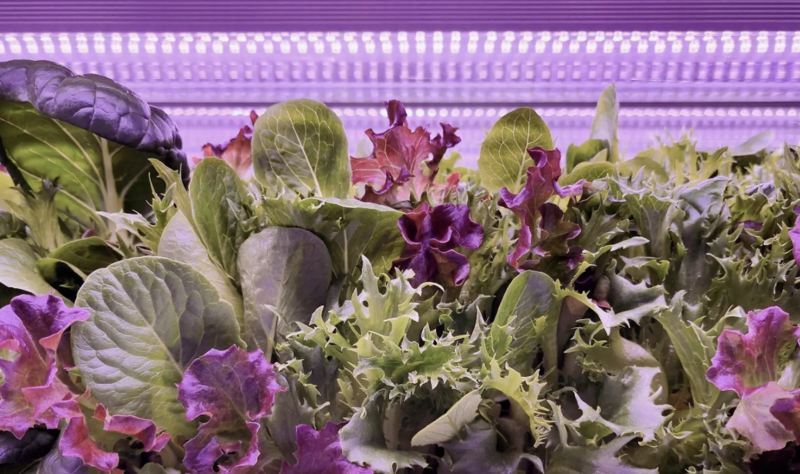When you think of a warehouse, you probably think of rusted shipping containers or movie fights scenes—not a bountiful harvest. Vertical farming may change that perception.
What’s going on? UP Vertical Farms has launched BC’s first hands-free vertical farming operation in which crops are grown in warehouses, stacked atop each other, using LED light.
- The practice enables growers to grow acres worth of produce in warehouses near Canadian urban centres, all year round. It’s doing gangbusters in the Netherlands.
- UP claims it can grow 350 times more lettuce than traditional farming methods and could put up to six million bags of salad greens on grocery shelves annually.
Why it matters: Even as inflation has fallen, food prices have continued to climb, posting double-digit inflation for the seventh straight month in February. Rising prices are, in part, linked to Canada’s food supply chain being heavily dependent on imports.
- Look no further than lettuce, which Canada sources pretty much entirely from one part of California, and has experienced two price surges over the past few months.
Yes, but: The knock against vertical farming is that the related energy bills are bigger than the Jolly Green Giant, making it economically unsustainable and environmentally unsound.
- Per a 2021 report, the average vertical farm used 38.8 kWh of energy per kilogram of produce. For traditional greenhouses, that number is only 5.4 kWh per kilogram.
Bottom line: Vertical farming promises to shore up the food supply chain by unlocking production capacity, increasing stock, and stabilizing prices. It could also become attractive as extreme heat events—which already contribute to global food insecurity—increase.–QH
